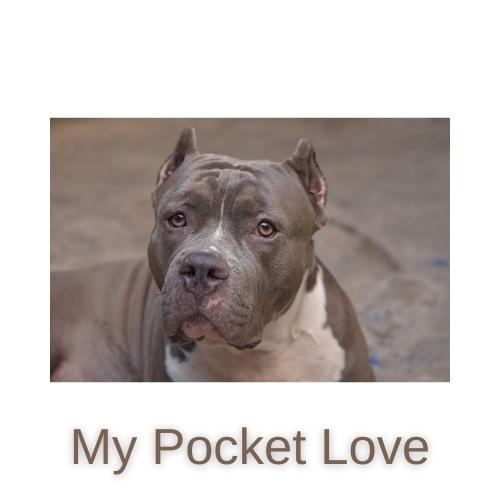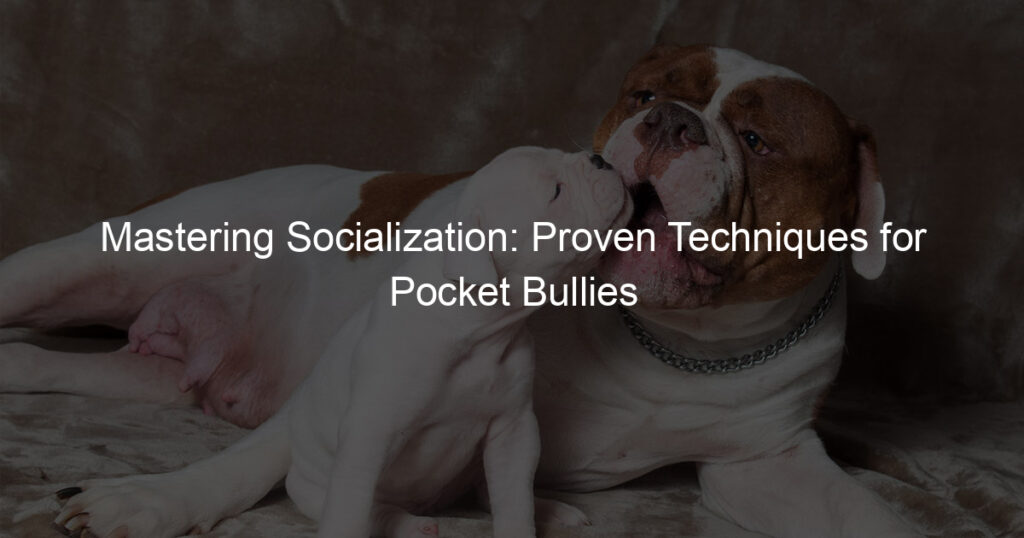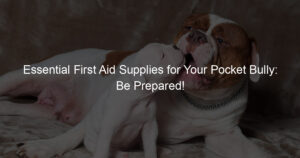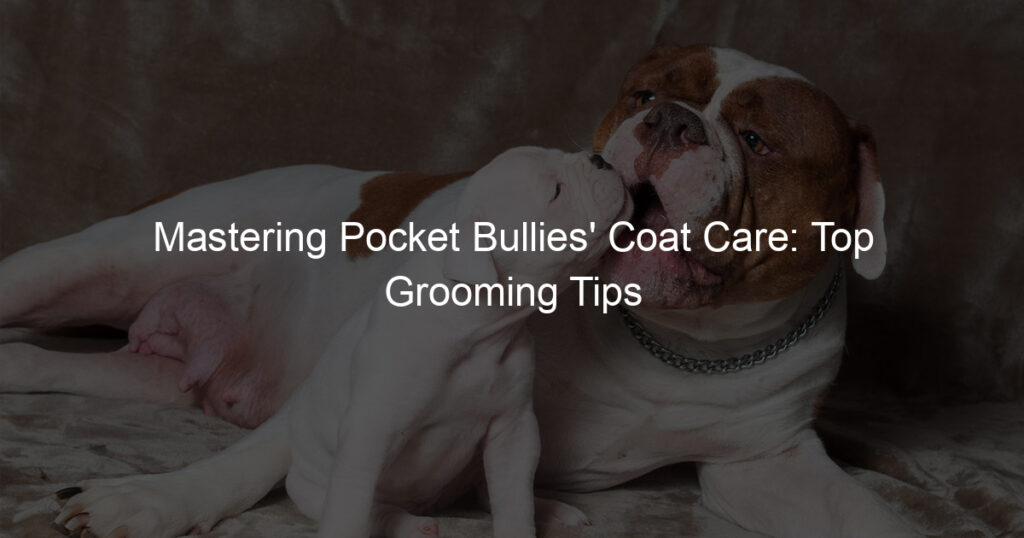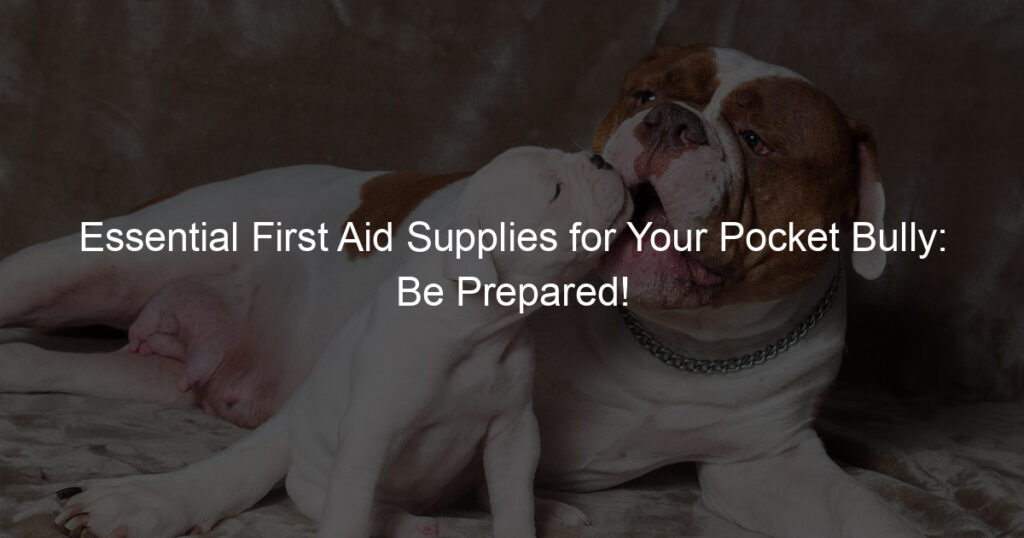
Introduction to Pocket Bullies Socialization
When it comes to raising a happy and well-adjusted Pocket Bully, socialization plays a vital role. This process involves introducing your furry friend to a variety of experiences, environments, and other animals to help them become comfortable and confident. Let’s delve into the importance of socialization for Pocket Bullies and provide an overview of the socialization process.
- Understanding the importance of socialization for Pocket Bullies
- Overview of the socialization process
Socialization is crucial for Pocket Bullies for several reasons. Firstly, it helps them to develop good manners. Dogs that are well-socialized are less likely to behave aggressively or fearfully in new situations. They are more likely to be friendly and comfortable around other dogs and people. Secondly, socialization can help prevent behavioral problems. Dogs that aren’t exposed to a variety of experiences can develop fears and phobias. Lastly, socialization makes your Pocket Bully a happier, more well-rounded pet. They will be more confident and less likely to be stressed in different environments.
The socialization process for Pocket Bullies involves gradually introducing them to a variety of experiences, environments, and other animals. This process should start as early as possible, ideally when they are puppies. The first step is to introduce them to different people, including children, adults, and the elderly. Next, expose them to different environments, like parks, busy streets, and quiet neighborhoods. It’s also important to introduce them to other animals, including other dogs and cats. Remember, the goal is not to overwhelm your Pocket Bully, but to gradually expose them to new experiences in a positive and controlled way.
In conclusion, socialization is a critical part of raising a Pocket Bully. It helps them to develop good manners, prevents behavioral problems, and makes them a happier, more well-rounded pet. The process involves gradually introducing them to a variety of experiences, environments, and other animals. So, start early and be patient, and you will have a well-socialized, confident, and happy Pocket Bully.
Effective Socialization Techniques for Pocket Bullies
When it comes to socializing your Pocket Bullies, there are several effective techniques you can use. These techniques are designed to help your dog become more comfortable in a variety of situations, and to interact positively with other dogs and people. Let’s explore some of these techniques in more detail.
Early Socialization
Early socialization is crucial for Pocket Bullies. This process should start when your dog is still a puppy. Here are a few strategies you can use:
- Introducing your Pocket Bullies to new experiences
- Encouraging positive interactions with other dogs
Exposing your Pocket Bullies to a variety of experiences at a young age can help them become more comfortable in different situations. This could include taking them to different environments, like parks, pet stores, or busy streets. It’s also beneficial to introduce them to different types of people and animals. Remember, the goal is to make these experiences positive and fun for your dog.
It’s important for your Pocket Bullies to learn how to interact positively with other dogs. This can be achieved by arranging playdates with other dogs, or by taking them to a dog park. Always supervise these interactions to ensure they remain positive. Reward your dog for good behavior to reinforce positive interactions.
Remember, early socialization is just the first step. It’s important to continue these practices as your Pocket Bullies grow into adulthood. This will help them become well-rounded and confident dogs.
Adult Socialization
As your Pocket Bullies grow into adulthood, their socialization needs change. It’s crucial to adapt your techniques to ensure they continue to thrive in social settings. Let’s explore some effective methods and how to overcome common challenges.
- Techniques for socializing adult Pocket Bullies
- Regular Walks: Regular walks in different settings such as parks, neighborhoods, and busy streets can help your adult Pocket Bullies become accustomed to various sights, sounds, and smells.
- Training Classes: Enrolling your dog in obedience or agility classes can provide structured socialization opportunities with other dogs and people.
- Play Dates: Arranging play dates with other well-behaved dogs can help your Pocket Bullies learn appropriate social behavior.
- Overcoming socialization challenges with adult dogs
- Patience: Remember, socialization is a gradual process. It’s important to be patient and consistent with your efforts.
- Positive Reinforcement: Rewarding your dog for positive behavior during socialization can encourage them to repeat it.
- Professional Help: If your Pocket Bullies continue to struggle with socialization, consider seeking help from a professional dog trainer or behaviorist.
Adult Pocket Bullies, like their younger counterparts, benefit from regular exposure to various environments and experiences. Here are some techniques:
Despite your best efforts, your adult Pocket Bullies might still face socialization challenges. Here’s how to overcome them:
In conclusion, socializing adult Pocket Bullies requires a tailored approach. Regular exposure to different environments, structured training classes, and play dates can help. Patience, positive reinforcement, and professional help can assist in overcoming any challenges. Remember, every dog is unique, and what works for one might not work for another. The key is to find what works best for your Pocket Bullies and stick with it.
Training Pocket Bullies for Socialization
Training your Pocket Bullies for socialization is a vital part of their development. This process helps them become well-behaved and friendly towards other animals and people. Let’s delve into the training methods for improving social behavior and the role of obedience training in socialization.
-
Training Methods for Improving Social Behavior
Training your Pocket Bullies to improve their social behavior involves a variety of techniques. The key is to start early when your pet is still a puppy. This is the time when they are most receptive to learning new things.
One effective method is positive reinforcement. This involves rewarding your pet for good behavior. For instance, if your Pocket Bully behaves well around other dogs or people, give them a treat or praise them. This will encourage them to repeat the good behavior.
Another method is exposure. Gradually expose your Pocket Bully to different environments, people, and animals. Start with short, controlled encounters and gradually increase the duration and intensity. This will help your pet become comfortable in various situations.
-
Role of Obedience Training in Socialization
Obedience training plays a crucial role in socializing your Pocket Bully. It teaches your pet to follow commands and behave well. This is particularly important in public places where good behavior is essential.
Basic commands like ‘sit’, ‘stay’, ‘come’, and ‘leave it’ can greatly help in managing your pet’s behavior. For instance, if your Pocket Bully gets too excited around other dogs, the ‘stay’ command can help calm them down.
Obedience training also helps establish you as the leader. This is important as dogs are pack animals and need a leader to follow. When your pet sees you as the leader, they are more likely to obey your commands and behave well.
In conclusion, training your Pocket Bullies for socialization involves a combination of techniques. Positive reinforcement and exposure can help improve their social behavior, while obedience training can ensure they behave well in various situations. Remember, patience and consistency are key in this process.
Understanding Pocket Bullies Behavior
Understanding the behavior of Pocket Bullies is crucial for their proper upbringing. In this section, we will delve into their common behavioral traits and how to effectively manage them.
Common Behavioral Traits
- Identifying common behaviors in Pocket Bullies: Pocket Bullies are known for their playful and energetic nature. They are also protective and can be stubborn at times.
- Understanding the root of these behaviors: These behaviors are often a result of their breeding. Pocket Bullies are bred to be protective and strong, which can sometimes translate into stubbornness.
- Techniques for modifying unwanted behaviors: Techniques such as positive reinforcement and consistent training can help modify unwanted behaviors in Pocket Bullies.
- Role of socialization in behavior modification: Socialization plays a crucial role in behavior modification. It helps Pocket Bullies to become more comfortable around other dogs and people.
- Introducing Pocket Bullies to other dogs: Introducing Pocket Bullies to other dogs should be done gradually and under controlled conditions to ensure a positive experience.
- Introducing Pocket Bullies to cats and other pets: Similar to introducing them to other dogs, Pocket Bullies should be gradually introduced to cats and other pets under controlled conditions.
- Utilizing positive reinforcement: Positive reinforcement, such as treats and praise, can be used to encourage desired behaviors in Pocket Bullies.
- Consistency in training: Consistency is key in training. It helps Pocket Bullies understand what is expected of them.
- Importance of patience in training: Training takes time and patience. It’s important to not rush the process and to give your Pocket Bullies the time they need to learn.
- Socializing Pocket Bullies with adults: Pocket Bullies should be gradually introduced to adults. This helps them to become comfortable around people and reduces the chances of aggressive behavior.
- Socializing Pocket Bullies with children: Similar to adults, Pocket Bullies should be gradually introduced to children. This helps them to become comfortable around younger people and reduces the chances of aggressive behavior.
- Benefits of group training classes for socialization: Group training classes can be beneficial for socialization as they provide an opportunity for Pocket Bullies to interact with other dogs and people.
- Finding the right class for your Pocket Bullies: It’s important to find a class that suits your Pocket Bullies’ needs. Consider factors such as the size of the class and the experience of the trainer.
- Advantages of individual training sessions: Individual training sessions can provide more personalized attention and can be tailored to your Pocket Bullies’ specific needs.
- Working with a professional dog trainer: A professional dog trainer can provide expert advice and guidance in training your Pocket Bullies.
- Understanding the social behavior of Pocket Bullies: Pocket Bullies are social animals. They enjoy being around people and other dogs, but they can be protective and territorial.
- How to encourage positive social behavior: Positive social behavior can be encouraged through regular socialization, positive reinforcement, and consistent training.
- Taking your Pocket Bullies to different places: Taking your Pocket Bullies to different places can help them become more comfortable in various environments.
- Introducing your Pocket Bullies to different sounds and smells: Introducing your Pocket Bullies to different sounds and smells can help them become more comfortable with various stimuli.
- Organizing play dates with other dogs: Organizing play dates with other dogs can provide an opportunity for your Pocket Bullies to socialize and play in a controlled environment.
- Monitoring your Pocket Bullies during play dates: It’s important to monitor your Pocket Bullies during play dates to ensure they are behaving appropriately and are not becoming overwhelmed.
In conclusion, understanding and managing the behavior of Pocket Bullies requires patience, consistency, and a good understanding of their needs. With the right approach, you can ensure that your Pocket Bullies grow up to be well-behaved and sociable dogs.
